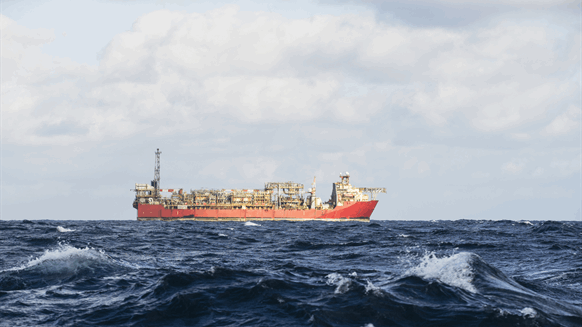
The Jotun floating production, storage and offloading platform (FPSO) of the Balder field on Norway’s side of the North Sea reached peak production of over 80,000 barrels of oil equivalent a day (boed) gross, operator Var Energi ASA said.
Jotun ramped up to capacity earlier than expected, after starting production June, the Stavanger-headquartered Norwegian continental shelf (NCS) producer said in a statement on its website.
“All 14 subsea production wells are now online and are on average producing in line with expectations, and work is ongoing to further optimize the production from Jotun FSPO”, Var Energi said.
“The Balder Phase V and VI projects are underway and will add additional capacity, maintaining high production from the Balder area going forward”.
The new capacity adds to “current production of around 30,000 boed gross combined from the Balder floating production unit and Ringhorne facilities”, the statement said.
The wider Balder hub, which includes the Breidablikk and Grane fields, accounted for 20 percent of Var Energi’s 2024 output and 276 million boe of proven and probable reserves at the end of the year, the company says on its website.
“The rapid ramp-up to peak production at the Jotun FPSO, alongside strong performance across our portfolio, puts us on track to meet our production target of around 430,000 boed in the fourth quarter of this year”, chief executive Nick Walker said in the statement.
“With the new facilities in the Balder area designed to extend production beyond 2045 we are on track to create more value from the area”.
Var Energi, 63.04 percent-owned by Italy’s state-controlled Eni SpA, has a 90 percent stake in the Balder field. Kistos Energy Norway AS owns 10 percent.
Last month Var Energi said it had approved four of more than 10 projects for which it expects to make a FID (final investment decision) this year.
“The company aims to maintain production in the range of 350,000 to 400,000 boed over time, supported by a robust portfolio of around 30 early-phase projects”, Var Energi said in a press release August 26.
“In addition, Var Energi continues to be one of the most active explorers on the NCS with three commercial discoveries year to date”, the company added.
New Discoveries
In July Var Energi announced a natural gas and condensate discovery in the already producing Fenja field in the Norwegian Sea.
“The discovery was made on the Vidsyn ridge, which has the potential to hold up to 100 million boe (MMboe) gross”, Var Energi said July 21. “The Vidsyn well confirms discovered recoverable resources in the range of 25-40 MMboe gross, which are considered commercial. The remaining potential of the ridge will be assessed through an appraisal program, to facilitate for a fast-track development”.
It said it would study a potential tie-in to Fenja, which went online April 2023. Var Energi operates Fenja with a 75 percent interest.
In June the Johan Castberg co-venturers announced the Drivis Tubaen discovery. Operator Equinor ASA, majority-owned by Norway, put preliminary estimates at 9-15 million barrels of oil.
“The Johan Castberg volume base originally estimated at 450-650 million barrels; our clear ambition is to increase the reserves by another 250-550 million barrels”, Grete Birgitte Haaland, Equinor senior vice president for exploration and production in Northern Norway, said in a company statement June 30. “To realize this, we are planning six new exploration wells and continuous exploration activity”.
Earlier in June Equinor said the Johan Castberg field, on Norway’s side of the Barents Sea, had reached capacity of 220,000 barrels of oil per day, after starting up late March.
Var Energi holds a 30 percent interest in Johan Castberg.
In February Var Energi announced the Zagato oil discovery in the Goliat field in the Barents Sea. It put preliminary estimates at 15-43 MMboe.
“This comes in addition to the Countach discoveries announced last year, and brings the total gross estimated recoverable resources up to a high case reaching around 100 MMboe”, Var Energi said February 27. “The discoveries continue to demonstrate the potential of the Goliat ridge, with estimated gross discovered and prospective recoverable resources increased to above 200 MMboe”.
Source: By Jov Onsat from Rigzone.com
